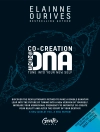This book presents important recent applied mathematics research on environmental problems and impacts due to climate change. Although there are inherent difficulties in addressing phenomena that are part of such a complex system, exploration of the subject using mathematical modelling is especially suited to tackling poorly understood issues in the field. It is in this spirit that the book was conceived. It is an outcome of the International INDAM Workshop “Mathematical Approach to Climate Change Impacts – MAC2I”, held in Rome in March 2017. The workshop comprised four sessions, on Ecosystems, Hydrology, Glaciology, and Monitoring. The book includes peer-reviewed contributions on research issues discussed during each of these sessions or generated by collaborations among the specialists involved. Accurate parameter determination techniques are explained and innovative mathematical modelling approaches, presented. The book also provides useful material and mathematical problem-solving tools for doctoral programs dealing with the complexities of climate change.
Table des matières
PART I – Theme: Geophysical Fluids and Climate: Ghil M. and Simonnet E., Geophysical Fluid Dynamics, Nonautonomous Dynamical Systems, and the Climate Sciences.- Cannarsa P. et al., Parameter determination for Energy Balance Models with Memory.- PART II – Theme: Hydrology: Cilli S. et al., Bedload transport processes in a coastal sand-bed river: the study case of Fiumi Uniti river in the northern Adriatic.- PART III – Theme: Glaciology: Krishna K. et al., Mathematical modeling of rock glacier flow with temperature effects.- Malek-Madani R. and R. Rajagopal K., A model to describe the response of Arctic sea ice.- Scagliarini A. et al., Modelling sea ice and melt ponds evolution: sensitivity to microscale heat transfer mechanisms.- PART IV – Theme: Ecology: Bianchi S. et al., Carbon dioxide time series analysis: a new methodological approach for event screening categorization.- Marangi C. et al., Mathematical tools for controlling invasive species in Protected Areas
A propos de l’auteur
Piermarco Cannarsa graduated from the University of Pisa and Scuola Normale Superiore in 1979. He has been Professor of Mathematical Analysis at the University of Rome Tor Vergata since 1990. His scientific interests include partial differential equations and control theory. He has published about 130 articles in international journals as well as two books. He is President of the Italian Mathematical Union and the Italian Coordinator of the Associated International Laboratory (LIA) on Control, Optimization, Partial Differential Equations, and Scientific Computing (COPDESC).
Daniela Mansutti is Research Director at IAC-CNR. She graduated in Applied Mathematics at Sapienza University of Rome in 1984. Dr. Mansutti won a CNR fellowship for a two-year visit at Pittsburgh University (USA) and specialized in nonlinear modelling of continuum media with K.R. Rajagopal. She then became a research scientist at IAC. She has authored about 60 papers in peer-reviewed international ISI journals. As coordinator or WP principal investigator on national/transnational research calls, she has studied problems in several physical contexts (newtonian/non-newtonian flows, phase change, glaciology, ecosystems etc.) with partial differential equations numerical modelling and stability analysis.
Antonello Provenzale is the Director of IGG-CNR. His research areas are geosphere–biosphere interaction, climate dynamics, and ecosystems. He is a recipient of the Golden Badge Award of the European Geophysical Society. Dr. Provenzale has been an invited professor at ENS and Pierre and Marie Curie University in Paris, Ben Gurion University in Israel, and University of Colorado in Boulder (USA). He is Coordinator of the EU H2020 project ‘ECOPOTENTIAL’ and WP Lead in the H2020 project “e LTER Plus”, as well as Coordinator of the Global Ecosystem Initiative of GEO. He is the author of more than 150 papers in peer-reviewed international ISI journals.












